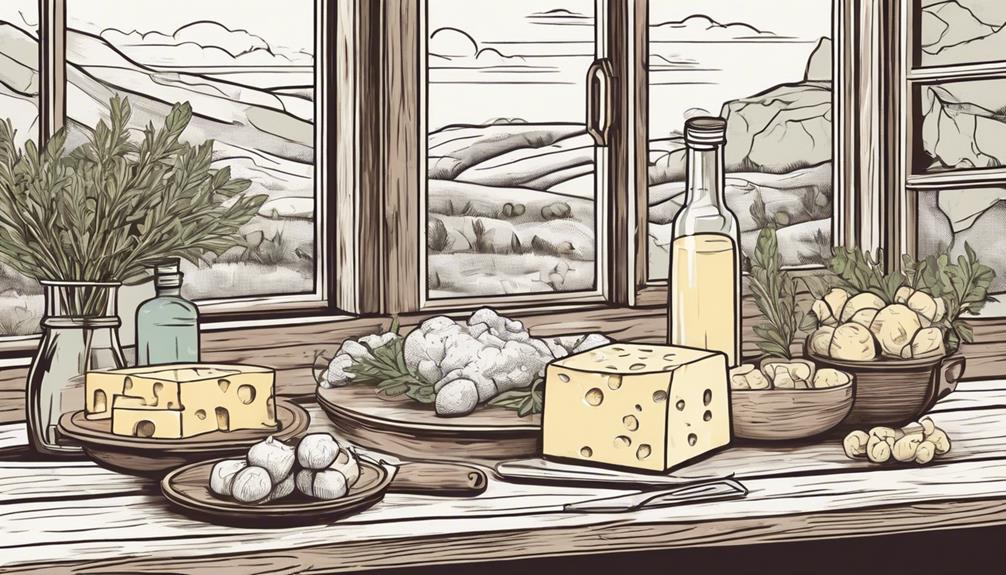How To Become More Self-Sufficient Without Starting a Full-Blown Farm…
Want to start preserving your harvest, making your own soap, or building a backyard root cellar — but not sure where to begin? “Homesteading Advice” gives you instant lifetime access to 35+ practical homesteading books on food preservation, veggie gardening, DIY natural cleaning products (save over $250 per year with this skill alone), brewing, off-grid energy, and a whole lot more…
Click Here To Check It Out Now!
“I’m setting up a small cheese-making business in Queensland, Australia, and I’m trying to better understand the role and historical significance of rennet in cheese making. Why was it so important historically, and how has its use evolved over time?” Thanks, Peter, Queensland, Australia.
What’s The Historical Significance Of Rennet In Cheese Making?
Hi Peter, what an exciting venture you’re embarking on! Cheese making is an art that has evolved over thousands of years, and rennet plays a pivotal role in this craft. Let’s explore its historical significance and how it has influenced cheese making through the ages.
What Is Rennet?
Rennet is a complex set of enzymes produced in the stomachs of ruminant mammals. These enzymes are vital for the cheese-making process as they coagulate milk, separating it into solid curds and liquid whey. This separation is the foundation of most cheese varieties. Without rennet, the diversity and richness of cheese as we know it today wouldn’t exist.
Rennet’s Discovery: A Serendipitous Start
The story of rennet’s discovery is wrapped in legend and folklore. The most popular tale suggests that an ancient herder, probably from regions now known as the Middle East, stored milk in a container made from a sheep’s stomach. The enzymes in the stomach lining naturally curdled the milk, leading to the formation of cheese. While the exact details are lost to history, it’s clear that accidental discoveries like this laid the groundwork for deliberate cheese-making practices.
Ancient History of Rennet
Archeological evidence shows that cheese making dates back to at least 5500 BCE in Poland. Ancient Egyptians, Greeks, and Romans also practiced cheese making extensively. They discovered that using animal stomach linings, which were naturally rich in rennin (the key enzyme in rennet), resulted in better cheese quality and faster coagulation.
Rennet in Diverse Cultures
Different cultures developed unique cheese-making traditions based on the availability of rennet sources in their regions:
- European Traditions: In Europe, cow, sheep, and goat rennets were predominantly used. Medieval European monasteries became centers for cheese-making innovations, creating renowned cheeses like Parmesan and Roquefort.
- Middle Eastern and African Practices: In these regions, camel and other local ruminants provided rennet, supporting regional cheese varieties.
- Asian Variants: Though less common, cheese-like products in regions of Asia utilized vegetable or microbial rennets, particularly in areas where dairy consumption was prevalent.
The Industrial Revolution and Rennet Production
The advent of the Industrial Revolution brought significant changes to cheese making. Around the 19th century, scientific advancements led to the industrial production of rennet. This standardized product improved consistency and quality, allowing mass-produced cheeses to flourish. The ability to produce rennet on a large scale meant cheese could be made more reliably and economically, transforming cheese from a local specialty to a widely available commodity.
Modern Rennet: From Animals to Laboratories
Today, cheese makers have a variety of rennet options:
- Animal Rennet: Still widely popular, sourced from the stomach linings of calves, lambs, or kids (young goats). Traditional and artisanal cheese makers often prefer it for its reliable performance and historical authenticity.
- Vegetable Rennet: Derived from specific plants like the thistle or fig. This is a popular choice among vegetarian cheese makers and those seeking to avoid animal products.
- Microbial Rennet: Produced by fermenting certain fungi or bacteria. It offers a vegetarian-friendly alternative and is used broadly in commercial cheese production.
- Genetically Engineered Rennet: Chymosin produced through recombinant DNA technology offers consistent quality and performance. This is especially favored in large-scale cheese production.
Rennet’s Role in Cheese Diversity
Each type of rennet contributes distinct characteristics to cheese:
- Flavor Profiles: Animal rennets can imbue unique flavors and textures, making them indispensable for certain traditional cheese varieties.
- Coagulation Efficiency: Different rennets work at varying speeds and temperatures, influencing the texture and aging potential of the cheese.
- Cultural Identity: Many cheeses are protected by origin designations (e.g., PDO in Europe) that specify traditional rennet use to preserve regional cheese-making practices and heritage.
Rennet and Modern Concerns
In today’s world, the use of rennet raises several important issues:
- Vegetarian and Vegan Concerns: With increasing demand for plant-based foods, vegetable and microbial rennets provide ethical alternatives for non-meat consumers.
- Quality and Consistency: Genetic engineering allows rennets to be produced with high consistency, crucial for industrial-scale cheese production.
- Regulatory and Labeling Issues: Different countries have varying regulations regarding the labeling of rennet in cheese, impacting consumer choices and market practices.
Final Thoughts…
Peter, it’s fascinating to see how such a simple enzyme has shaped the history and development of cheese making across cultures and millennia. Understanding the historical significance of rennet can provide rich insights into your practice, offering a deeper appreciation of the traditions you continue. Thanks for this fantastic question, and all the best with your cheese-making adventure in Queensland!

